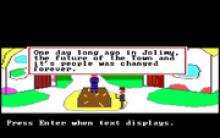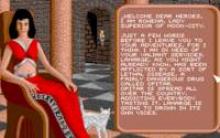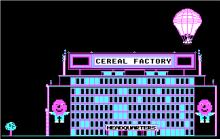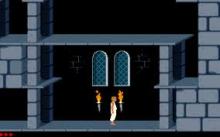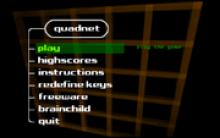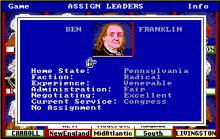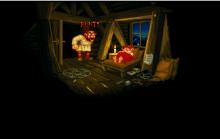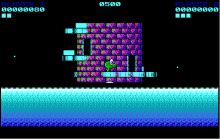Thinkin' Things Collection 1
How to play Thinkin' Things Collection 1
Each game uses different controls, most Amiga games use both mouse and keyboard.
Thinkin' Things Collection 1 Description
The Birth of Thinkin' Things Collection 1
In 1993, Edmark Corporation revolutionized educational gaming by releasing Thinkin' Things Collection 1. Aimed at children aged 4–8, this interactive series encouraged learning through creative exploration. By blending gameplay with foundational concepts like shapes, music, and problem-solving, the series made education an engaging and entertaining experience.
Thinkin' Things emerged during the early 1990s, a period marked by the rise of technology-driven education. It encouraged children to experiment with patterns, sounds, and motions in a virtual environment emphasizing creativity and active learning.
Edmark’s Vision and Its Key Players

- Edmark Corporation: Founded in 1982, Edmark specializes in educational software, with a mission to make learning interactive and enjoyable. Thinkin' Things reflected their commitment to this goal, setting a new standard in edutainment.
- John E. Dell: As one of the key developers, Dell brought the games to life with intuitive designs that made complex concepts accessible for young learners.
- Educational Collaborators: Teachers and psychologists provided valuable input to ensure the content aligned with developmental goals and educational standards.
Milestones and Recognition
The success of Thinkin' Things was solidified when Collection 1 won the CODiE Award for Best Early Education Program in 1994. This accolade highlighted the game’s effectiveness in blending fun with learning, gaining the trust of educators and parents alike. The series expanded with Thinkin' Things Collection 2 (1994) and Collection 3 (1995), each iteration adding new features and activities.
How Thinkin' Things Engages Young Minds

Interactive Gameplay
The games were designed with hands-on exploration at their core. By manipulating objects and experimenting with activities, children learned concepts intuitively.
- Creative Activities: Players could create music, design patterns, and explore motions using various interactive tools.
- Simple Commands: The intuitive interface ensured accessibility, making it easy for young users to navigate activities.
Open-Ended Exploration
Every activity in Thinkin' Things offered multiple approaches, fostering creativity and independent thinking. Children could choose their methods to achieve results, encouraging self-expression.
Positive Reinforcement
Feedback within the games celebrated effort, building confidence in children as they explored new concepts. This supportive environment motivated them to experiment without fear of failure.
Modern Adaptations of Thinkin' Things

The influence of Thinkin' Things persists in modern education technology. Though the original series remains a cherished classic, it has inspired many new tools for learning:
- Digital Re-Releases: Modern versions of Thinkin' Things are accessible through platforms like ClassicReload and the Macintosh Repository, allowing today’s children to experience the original games.
- Thinkin' Science Series: Building on the success of Thinkin' Things, Edmark developed this series to introduce scientific concepts, combining gameplay with advanced learning objectives.
- Educational Apps: Many apps today, such as interactive art and music games, draw inspiration from Thinkin' Things. These tools incorporate gamification strategies to teach foundational skills in creative ways.
Step-by-Step Guide to Navigating Thinkin' Things
- Launch the Game: Start by selecting the desired collection and familiarize yourself with the interface.
- Choose an Activity: Explore activities like music creation or pattern design to find one that sparks interest.
- Interact and Experiment:
- Adjust shapes, sounds, and motions to see how different elements interact.
- Experiment with various settings to discover new outcomes.
- Personalize Your Creations: Modify colors, layouts, and features to express creativity and better understand how changes affect results.
- Save and Revisit: Save completed projects to revisit or refine them later, reinforcing learning through repetition.
- Utilize Prompts: Pay attention to in-game hints or suggestions to maximize educational value.
Mechanics That Set Thinkin' Things Apart
- Hands-On Exploration: Activities are designed for players to learn by doing, encouraging curiosity and problem-solving.
- Multiple Outcomes: Open-ended tasks let children approach challenges in their way, promoting creativity and critical thinking.
- Playful Learning: The game seamlessly integrates education into gameplay, making learning enjoyable.
Thinkin' Things remains a landmark in the evolution of educational software. By merging fun with foundational learning, it paved the way for modern educational games and apps. Even decades later, its emphasis on creativity and exploration inspires tools that help young learners thrive.
The Thinkin' Things series allows players to experiment and explore with interactive objects in different ways and methods throughout the games. This can be in the form of playing with shapes, patterns, motions, sound effects and music tunes. Every game has its own preset designs and demonstrations to give the player an idea on the game's works before the player can customize a design of their own. Some games also permit the player to record their own sounds with a microphone.
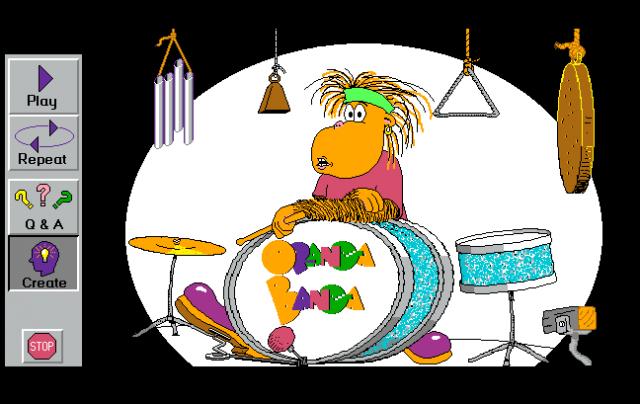
Thinkin' Things Collection 1 - additional information












